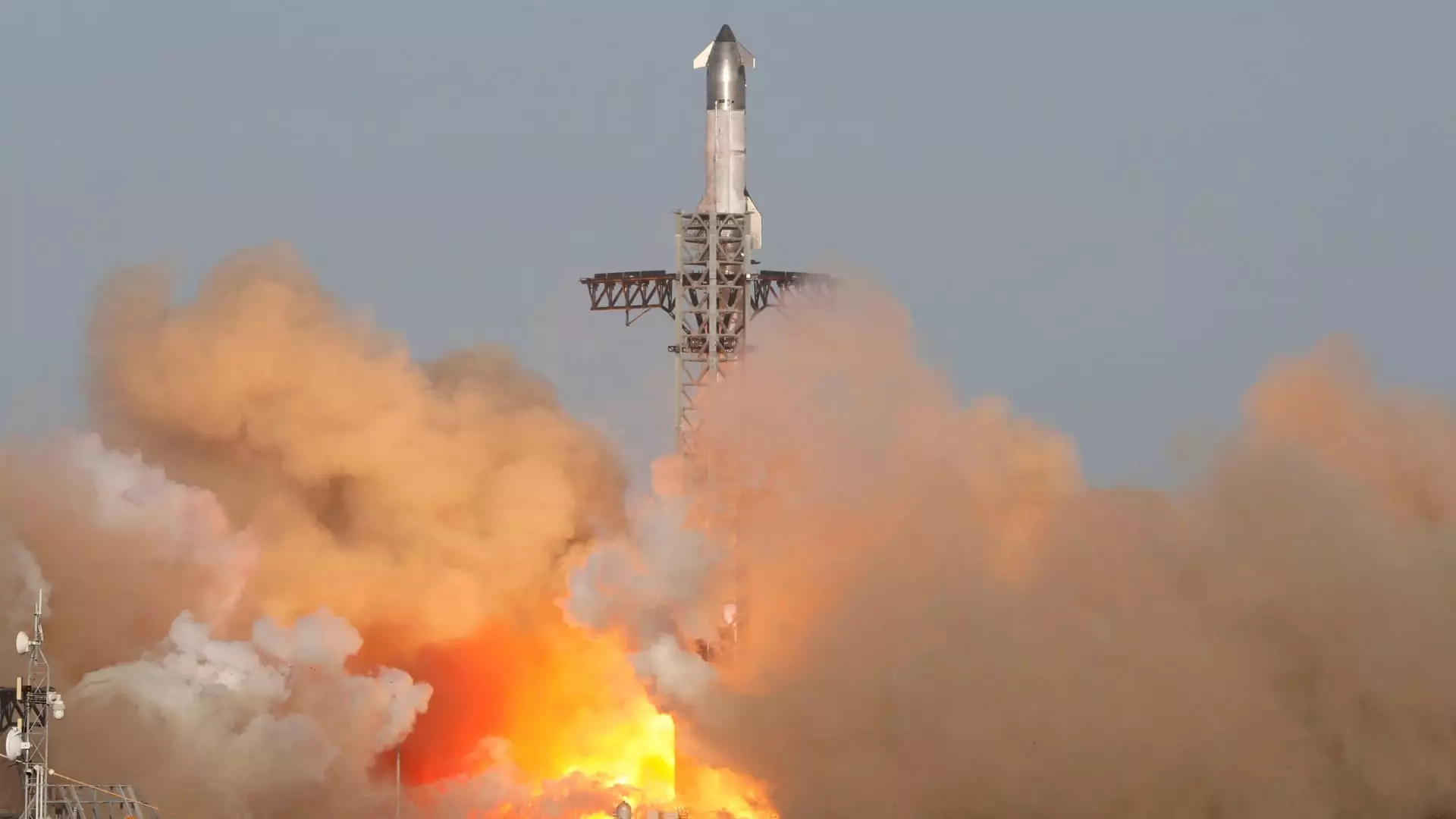The recent testing failure of SpaceX’s Starship has once again stirred significant controversy within both the aviation and aerospace communities. Following the incident, which resulted in the temporary suspension of flights at several Florida airports, it is clear that we must scrutinize the implications of SpaceX’s ongoing mishaps. This marks the second time this year that a failure during a Starship flight test has disrupted commercial aviation, creating an untenable environment for air travel in a region frequented by tourists and business travelers alike. Indeed, the intersection of commercial flights and ambitious space exploration is coming under an intense spotlight, showing that rapid innovation isn’t devoid of perilous repercussions.
FAA’s Dilemma: Regulator or Enabler?
The Federal Aviation Administration (FAA) has been faced with an immense quandary. Although its primary role is to ensure passenger safety in commercial air travel, recent events challenge its ability to govern effectively in a time when space exploration is no longer the realm of distant possibility but rather an ambitious corporate reality. The agency had to enact a “Debris Response Area” and slow or stop flights amidst falling debris—a stark warning about the hazards posed by private space ventures. One critical aspect is the FAA’s decision to allow SpaceX to proceed with subsequent test flights despite the outstanding investigation into earlier failures. This level of leniency raises pressing questions about whether the FAA is truly prioritizing public safety or merely accommodating the demands of a powerful corporate entity.
Commercial Aviation vs. Ambition
The implications for commercial aviation are significant. Miami International Airport, a crucial hub for American Airlines, and others such as Fort Lauderdale and Orlando, came to a standstill in the face of a failure that led to debris falling perilously close to active flight paths. The juxtaposition of commercial airlines and burgeoning space enterprises encapsulates a larger dilemma: how do we support innovation in aerospace without compromising the established systems that facilitate everyday travel? The answer is complex, requiring a recalibration of how regulatory frameworks manage competing interests in a rapidly evolving industry landscape.
Debris in the Skies: An Ominous Future?
The re-emergence of debris from space vehicles poses an ever-present threat to both aviation and communities living in proximity to launch sites. The FAA has made it clear that the risk is real, evidenced by their alerts regarding “dangerous areas for falling debris.” The ongoing reliance on a single company for space exploration raises concerns about accountability, particularly as these project failures escalate into the public domain. Should SpaceX’s ambitions result in peril for passengers in commercial aircraft or pose threats to nearby populations, we must question whether this trailblazing journey into the cosmos is worth the concurrent risk to civil safety.
Status Quo: The SpaceX Effect
Elon Musk’s proximity to political power—his role as a senior advisor to a past president—intertwines governmental oversight with corporate ambition in a way that warrants concern. The unease among Democratic lawmakers regarding potential conflicts of interest highlights the fragility of our regulatory bodies in navigating the murky waters of entrepreneurship and governance. The benefits of innovation cannot come at the cost of public safety, yet the increasing influence of aerospace giants creates a status quo where accountability may fall by the wayside.
A Call for Rigorous Oversight
As we visualize our progress into the next era of space exploration, we must not lose sight of the safety protocols that govern our skies. The urge to push forward must be coupled with robust regulatory measures that hold SpaceX and others in the industry to higher standards. The remarkable potential of Starship, capable of revitalizing both space travel and Earth’s transportation, should come with an equally weighted commitment to safety and accountability. The aviation industry’s current predicament, as illustrated by the disruption in Florida, signals an urgent need for a recalibrated approach that balances innovation with the safety, security, and concerns of the thousands of lives that could be affected when ambition goes awry.

